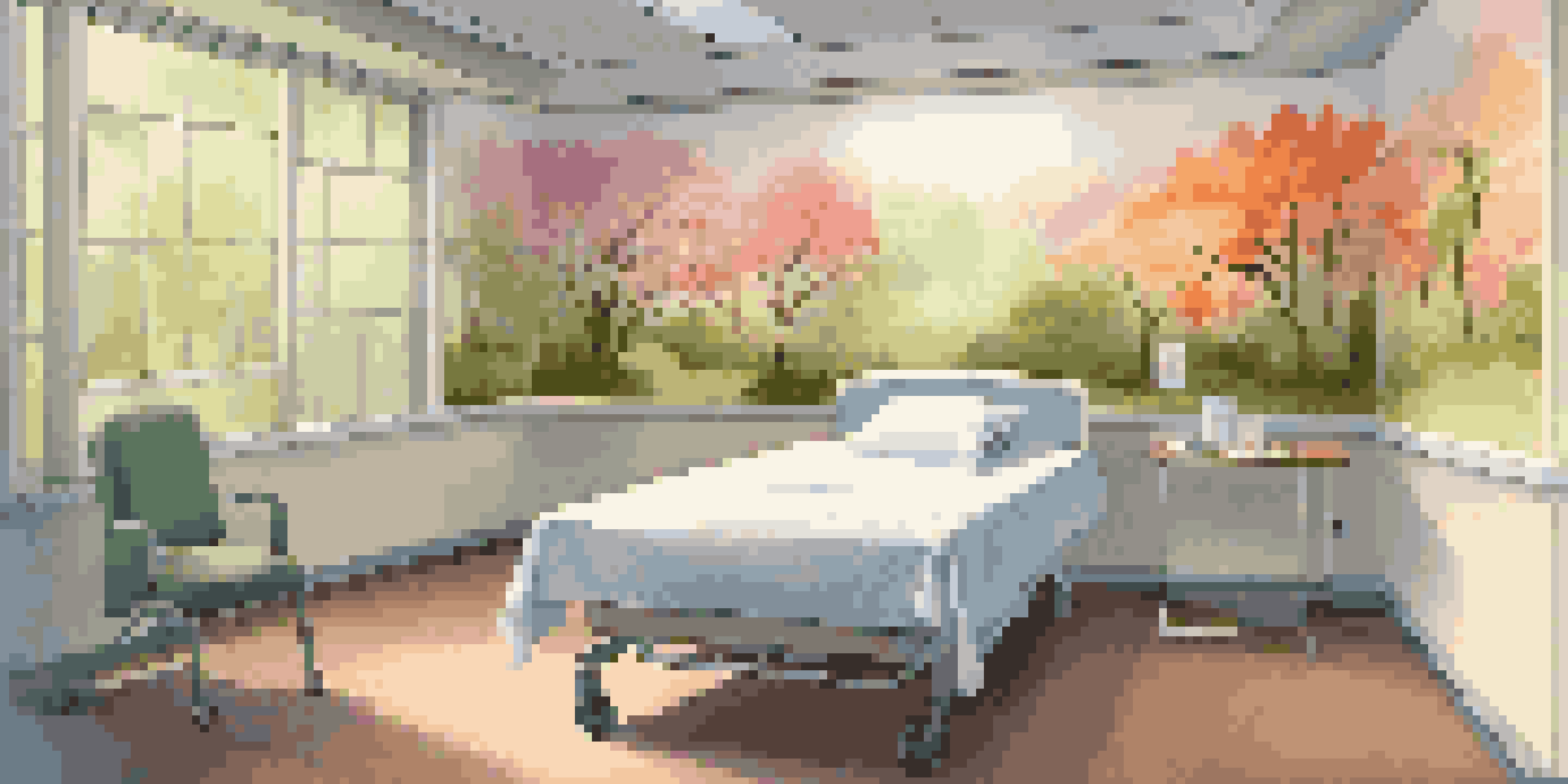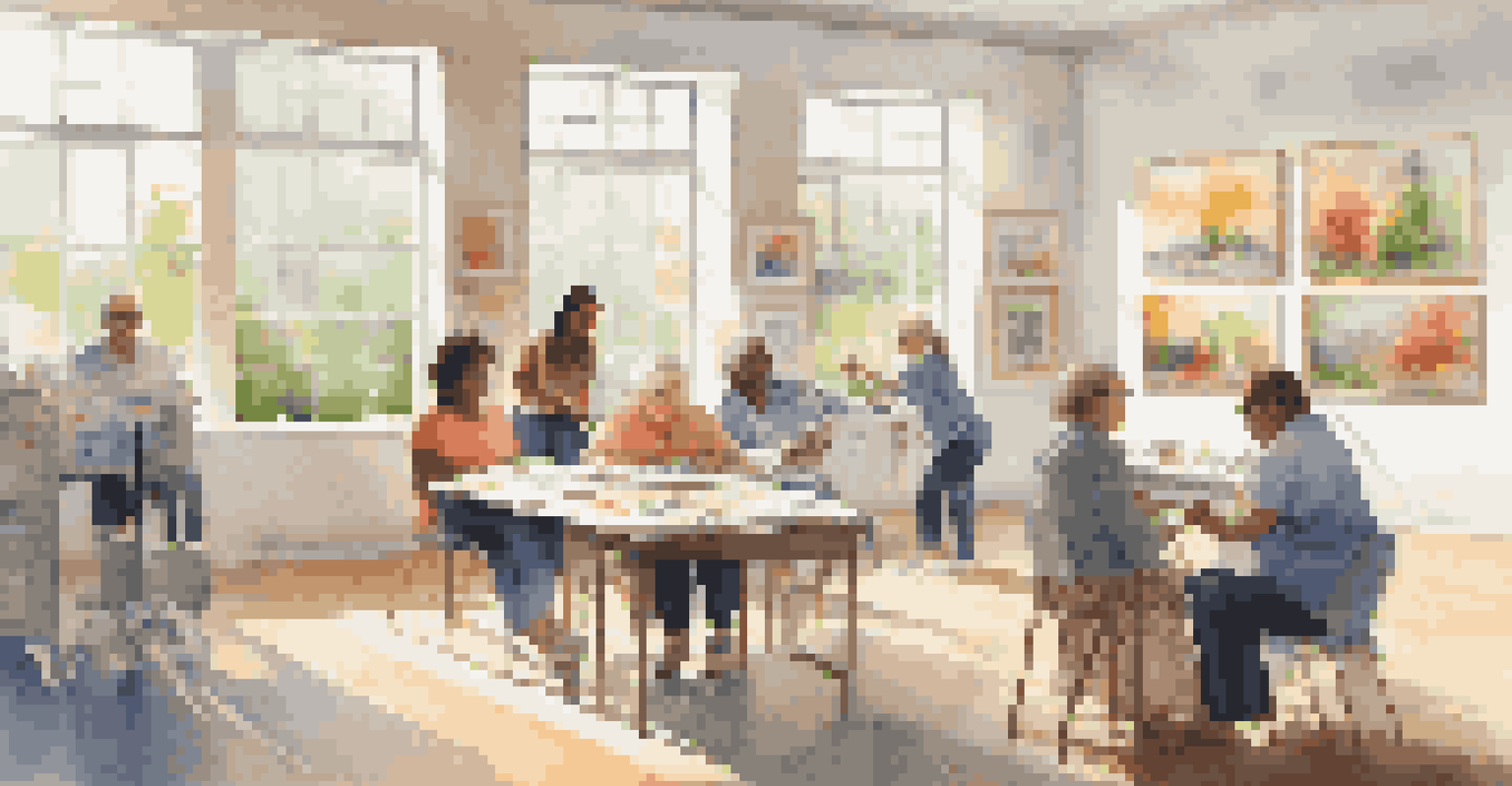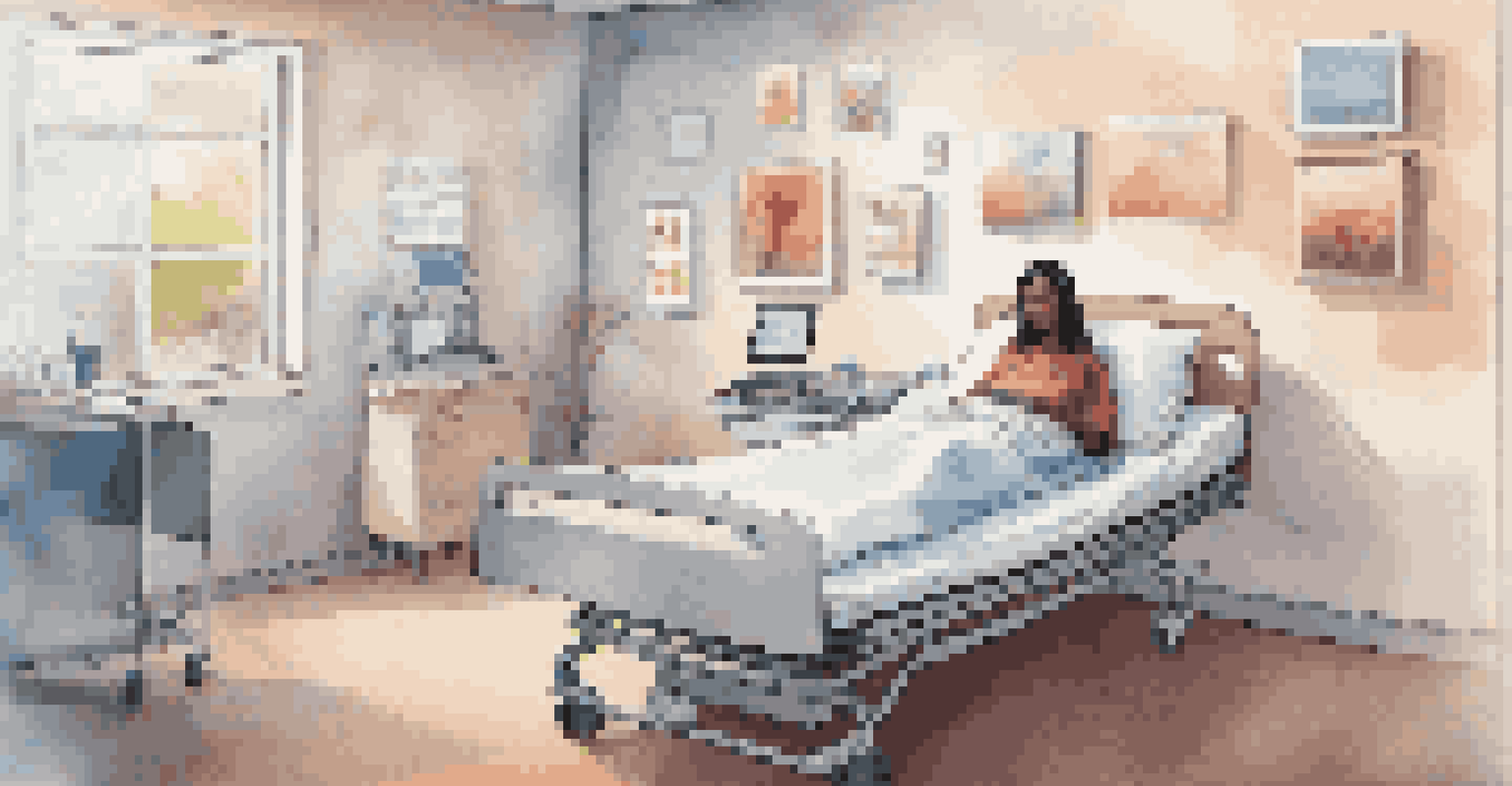The Role of Art in Alleviating Hospital Anxiety

Understanding Hospital Anxiety and Its Impact
Hospital anxiety is a common experience among patients, often stemming from fear of the unknown, medical procedures, or a sense of isolation. This anxiety can lead to heightened stress levels, which may affect recovery and overall well-being. Understanding the psychological impact of being in a hospital is crucial for both patients and caregivers.
Art is the most beautiful of all lies; it is a truth that is hidden in a creative expression.
Patients frequently report feelings of vulnerability when entering a hospital environment. This setting, often sterile and intimidating, can amplify feelings of worry and fear. As healthcare providers aim to create a healing atmosphere, addressing these emotional concerns becomes vital.
Recognizing the emotional toll of hospital stays can pave the way for innovative solutions, such as integrating art into the healing process. By exploring how art can serve as a therapeutic tool, we can better understand its role in alleviating hospital anxiety.
The Therapeutic Benefits of Art in Healthcare
Art therapy has been shown to have numerous therapeutic benefits, including reducing anxiety and improving emotional well-being. Engaging in creative activities can offer patients a sense of control and expression during a time when they may feel powerless. Whether it’s drawing, painting, or even listening to music, art provides an outlet for emotions.

Numerous studies have demonstrated that art can lower cortisol levels, the hormone associated with stress. For instance, patients who participate in art therapy often report feeling calmer and more relaxed. This physical response can significantly enhance their overall hospital experience.
Art Reduces Hospital Anxiety
Engaging in creative activities like art therapy can significantly lower anxiety levels and enhance emotional well-being for patients.
By incorporating art into healthcare settings, we can foster a more supportive environment that prioritizes mental health alongside physical recovery. This dual approach can lead to better patient outcomes and a more compassionate healthcare system.
How Art Enhances the Healing Environment
Art can transform the clinical atmosphere of a hospital into a more welcoming and comforting space. Colorful murals, calming images, or interactive installations can make waiting rooms and patient rooms feel less intimidating. This transformation aids in reducing anxiety and promoting a sense of peace.
The arts are not a luxury. They are an essential part of life and contribute to our emotional well-being.
For example, hospitals that have incorporated art displays often see improved patient mood and satisfaction. Patients may find solace in viewing inspiring artwork or engaging with creative pieces, allowing them to momentarily escape their circumstances. This shift in environment can be crucial in their healing journey.
Ultimately, when art is thoughtfully integrated into healthcare settings, it can create a nurturing atmosphere that supports both mental and physical health. Such environments encourage a holistic approach to healing, benefiting patients and staff alike.
Personal Stories: Art in Action
Personal anecdotes from patients highlight the power of art to ease anxiety in hospitals. For instance, one cancer patient shared how painting allowed her to express her fears and frustrations during treatment. This creative outlet became an essential part of her coping strategy, providing her both comfort and clarity.
Another patient recalled how a simple art class offered in the hospital helped shift his focus away from pain and anxiety. Engaging with fellow patients and creating something beautiful turned his hospital experience into a more positive one. These stories illustrate the profound impact art can have on individual journeys.
Transforming Healing Environments
Incorporating art into hospital settings creates a more welcoming atmosphere, which can improve patient mood and satisfaction.
Such testimonials remind us that art is not just an abstract concept but a tangible tool for emotional healing. By sharing experiences, patients can inspire others to embrace creativity as a means of coping with their own hospital anxieties.
Integrating Art into Hospital Programs
Many hospitals are increasingly recognizing the importance of integrating art into their patient care programs. This can include offering art therapy sessions, inviting local artists to display their work, or creating art spaces for patients to explore their creativity. These initiatives can significantly enhance the overall patient experience.
Healthcare providers are collaborating with art therapists and community artists to develop structured programs that cater to patients’ emotional needs. Such partnerships can also foster a sense of community, making patients feel less isolated during their recovery. This approach highlights the role of collaboration between different disciplines for holistic healing.
By embedding art into the fabric of hospital culture, we can create a more supportive environment that acknowledges the importance of mental health. This shift can lead to lasting improvements in patient satisfaction and emotional well-being.
The Role of Technology in Art Therapy
With advancements in technology, art therapy is evolving to include digital mediums as well. Virtual reality experiences, digital art apps, and online art classes are becoming more accessible, allowing patients to engage in art therapy from their hospital beds. This innovation can be particularly beneficial for patients with mobility issues or those confined to their rooms.
For example, patients can use tablets to create digital artwork or explore virtual galleries, immersing themselves in creative experiences without needing to leave their space. These digital tools not only alleviate anxiety but also promote a sense of agency and self-expression. This adaptability is crucial in today’s healthcare landscape.
Technology Enhances Art Therapy
Advancements in technology allow for digital art therapy options, making creative expression accessible to patients with mobility challenges.
By embracing technology in art therapy, hospitals can reach a broader range of patients and provide them with vital emotional support. This integration reaffirms the idea that healing can happen in various forms, tailored to individual needs.
The Future of Art in Healthcare
As more healthcare facilities acknowledge the benefits of art in alleviating hospital anxiety, the future looks promising. There is a growing trend to prioritize mental health alongside physical treatment, paving the way for more comprehensive patient care. This shift indicates a broader recognition of the importance of emotional well-being.
Health organizations are beginning to implement long-term plans that include art initiatives as standard practice. This could involve ongoing partnerships with artists, regular art workshops, or even art-based research studies to measure the impact on patient outcomes. Such initiatives can significantly enhance the overall hospital experience.

In conclusion, the role of art in healthcare is expanding as we recognize its powerful ability to alleviate anxiety and promote healing. By continuing to innovate and integrate art into hospital settings, we can create more compassionate environments that foster both emotional and physical recovery.